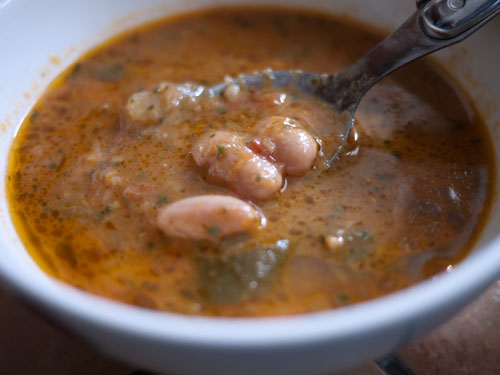
Recipes abound in print and online for Soupe au Pistou, a bean and vegetable soup that is a Provençal classic. Mine is not much different from the rest, but it's here because I love it so much. It reminds me of why I wanted to move here in the first place. When a pot of Soupe au Pistou is simmering away on our crappy hotplate (yes, it can be made on a hotplate) it makes my continuing kitchenless state somewhat tolerable. A big bowl warms me up when the temperature drops to the single digits celsius, and the chill seeps into this old stone house from all the gaping gaps in the doorways and windows and walls.
I make it around this time of year with fresh, undried beans - coco blanc and coco rouge - that we can buy at the markets here. They are so gorgeous, before and after shelling. However, it's probably a lot easier for most people to get a hold of dry beans so the recipe calls for them. If you can get fresh beans, just use a tad more - 3 cups total - and skip the soaking and pre-cooking part.
For the first time on Just Hungry, I've included a Japanese version of the recipe too. This is mainly for my mom and aunt to read, but take a look if you are studying Japanese - or point your Japanese friends to it. It is not a translation of the English, but a version specifically for making this soup in Japan.
Filed under:
soup legumes fall vegetarian french provence favorites vegan gluten-free
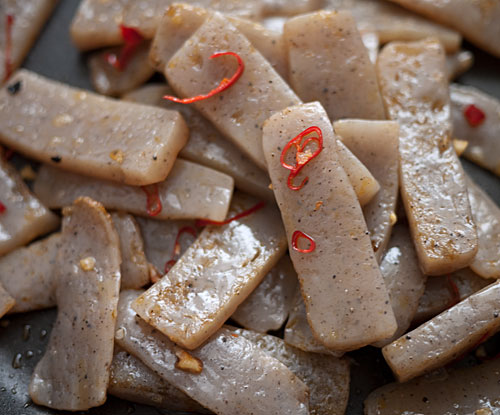
Konnyaku is a wonderful food for anyone on any kind of diet - provided, of course, that you like it. I do like it - it has a very unique chewy-bouncy texture. I have described konnyaku and its noodle-shaped cousin, sharataki, before, but briefly, konnyaku is a grey to white colored, gelatinous mass which basically consists of water and fiber. It has almost no calories. Right out of the package, konnyaku and shirataki have an odd smell, but if you treat it properly (directions given below) you can get rid of that and just have the flavorless yet curiously interesting mass of goo that is going to fill up your belly in a very useful way.
This is something very easy to make in a jiffy. It's basically taking a classic Italian spaghetti recipe and applying it to konnyaku. You could make this with shirataki too, in which case it will actually look like noodles, but I rather prefer the chewier texture of konnyaku. The only thing to watch for if you are on a diet is the amount of olive oil and optional cheese you use.
Filed under:
japanese lighter weightloss vegetarian vegan fusion low-carb
Submitted by maki on 17 September, 2010 - 12:19
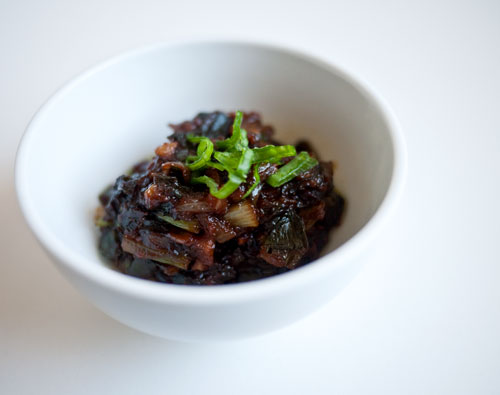
This is one of those really useful and versatile sauces or pastes (the consistency just depends on how long you cook it down to evaporate the moisture) that is so easy to make that it's really barely a recipe. It's a basic standby in Japanese kitchens.
Type:
recipe Filed under:
basics japanese vegetarian miso vegan
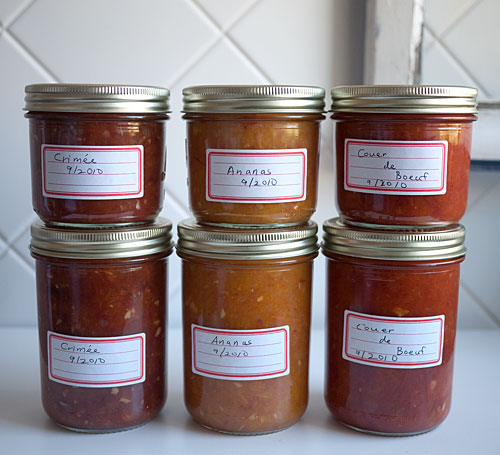
Minimalist tomato sauce, made from a single variety of heirloom tomatoes.
Filed under:
preserves and pickles vegetables summer low-carb
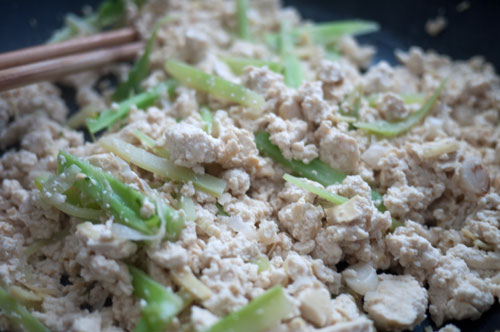
A low-carb, low-key tofu dish that serves as a background element to a meal, serving the role that rice usually plays.
Filed under:
japanese vegetarian vegan low-carb diabetes

Ahh, tomatoes. What temperature is right for them?
Filed under:
japanese vegetarian provence summer france vegan salad low-carb
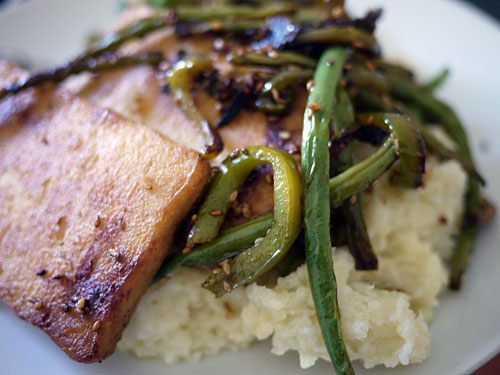
A low-carb, vegan lunch experiment.
Filed under:
vegetarian tofu vegan low-carb diabetes
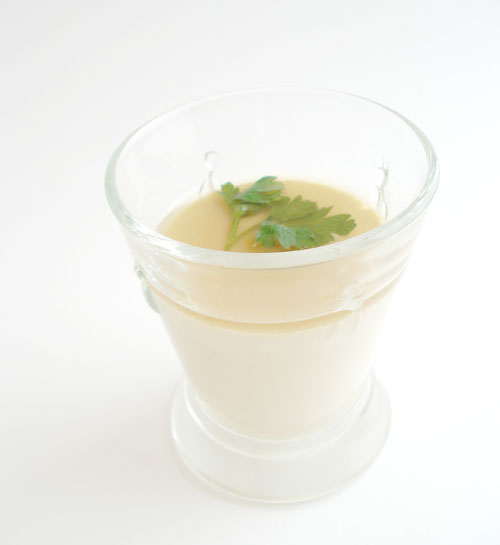
(From the archives - something cool and easy, perfect for the summer. Originally published in July 2008.)
Previously, I explained how some dishes that are not tofu are called -tofu, because of the shape, texture or both. This is the case with tamago dofu, a smooth savory egg custard that's served cold.
You can make it in a square mold, to make it look tofu-like. But I prefer to keep it a lot simpler by cooking the tamago dofu in the serving container it will be served in. This can be anything as long as it's heat-proof. Here I have used some sturdy glass cups made of pressed glass, but I've also used little pudding molds, tiny glass bowls made for holding ingredients while you're cooking, and even coffee cups.
There are very few ingredients in a tamago dofu: dashi or soup stock, eggs, and a few flavorings. Because of this, each component should be of top quality, because you'll taste each one quite clearly. Traditionally the soup component is dashi, but I don't really like the fish flavor of dashi when it's cold. So I prefer to make a simple vegetable stock instead.
Tamago dofu should be served ice cold. It's a great appetizer for a summer meal, or an interesting and soothing snack. I have been guilty of making 4 cups and 'hiding' them so I can eat them all by myself.
Filed under:
eggs japanese party food summer
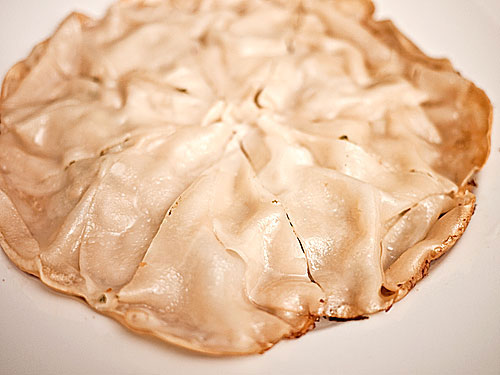
A quickie, deconstructed version of gyoza dumplings.
Filed under:
japanese quickcook chinese
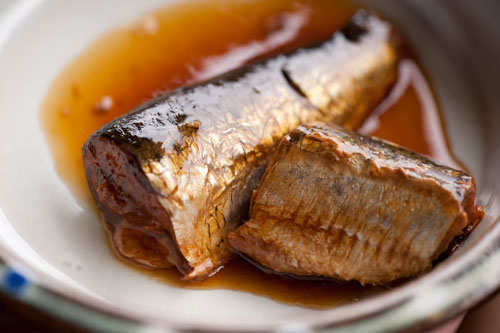
One thing I'm really enjoying here in Japan is cooking simple things at home with my mother. To me, quintessential Japanese home cooking is a dish like this. Sardines, which happen to be quite inexpensive (and sustainable too), are slowly cooked until they are well flavored, meltingly soft, and glossy with a typically Japanese sweet-salty sauce. (The 'kanroni' (甘露煮) in the name refers to the method of simmering something in this sweet-salty sauce.) It uses just a few basic ingredients, so please give it a try if you can get a hold of very fresh sardines or similar oily fish. (The fish do have to be very fresh for this to be really good and not-fishy.)
I had a bit of a job working out this recipe, which comes from my mother, since she really doesn't measure anything when she makes this! After some trial and error, I think these ingredient amounts work well.
Filed under:
japanese fish washoku mom's recipes
Pages